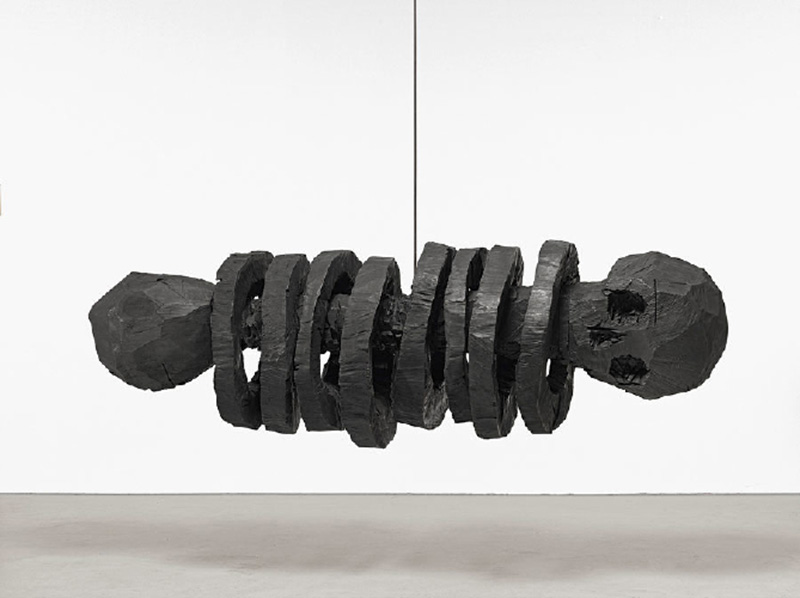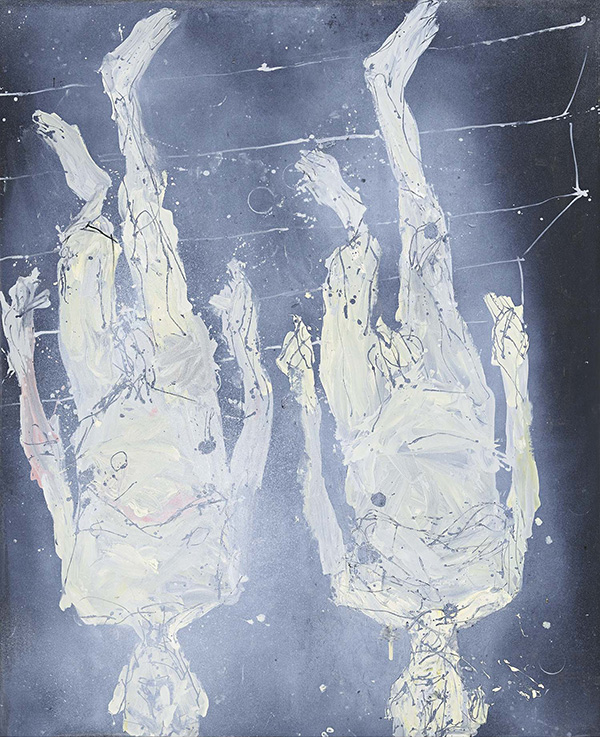ART CITIES:N.York- Georg Baselitz

Georg Baselitz’s work confronts the visceral reality of history and tragedy of being German in a post World War II era. He is best known for his inverted, or upside-down paintings that shift emphasis from subject to the properties of painting itself, creating not just a painted canvas, but a nearly sculptural object. The anamorphic quality of his heroic and rebellious figures has had a powerful and international influence on Neo-Expressionist artists.
By Dimitris Lepesis
Photo: Gagosian Gallery Archive
In 1969, seeking to free painting from the constraint of immediate comparison to reality, Baselitz painted portraits and landscapes upside-down, creating compositions that appear at first as abstractions, but slowly resolve as representational works. More than 40 years later, he continues to subvert the painted subject, now seeking atmospheric effects that impart to the viewer the sensation of peering through a vaporous void to discover ambiguous bodies within. “Jumping Over My Shadow” is an exhibition of new paintings, drawings, and sculptures by Georg Baselitz. The exhibition presents paintings and drawings that focus on the human body yet which make that body difficult to approach or perceive. This set of self-portraits includes several unseen works that Baselitz made after the “Avignon Paintings”, that were featured in the 2015 Biennale di Venezia, a series of eight towering vertical canvases, each containing a single visceral figure. In these new works, Baselitz conveys the sense of these bodies through the materiality of paint. In “Abgang mit Marcel” (2016), drips of paint create a tangled vascular system for a ghostly, even weightless, figure. Its milky-white, partly translucent body oozes down the canvas, the head already beyond the edge. As suggested by its title, the work refers to famous Marcel Duchamp’s “Nude Descending a Staircase” (1912), but instead of following a prismatic Cubist descent, Baselitz’s nude simply vanishes. Its feet float, failing to touch the staircase formed by a thin white line. Unlike the paintings and drawings, which seem to melt away, the sculptures are anchored in an obdurate materiality. The weight and solidity of bronze disguises itself in the dense matte black of charred wood.
Info: Gagosian Gallery, 522 West 21st Street, New York, Duration: 20/9-29/10/16, Days & Hours: Tue-Sat 10:00-18:00, www.gagosian.com

